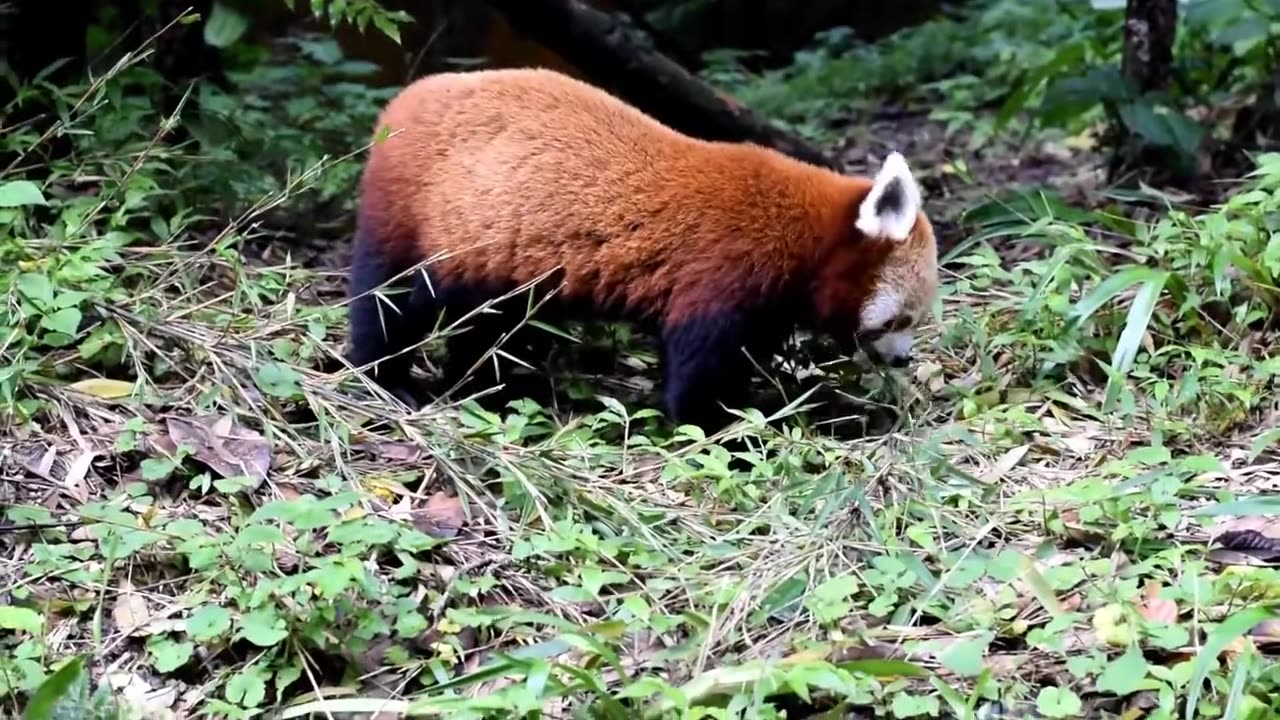Premium Only Content

About The Red Panda
The red panda, scientifically known as Ailurus fulgens but also affectionately referred to as the lesser panda, the red bear-cat, and the red cat-bear, is a captivating mammal endemic to the lush landscapes of the eastern Himalayas and southwestern China. It sports a lustrous coat of reddish-brown fur, a distinctive long and shaggy tail, and a charming waddle in its step, a result of its relatively shorter front legs. Although it shares a similar size to a domestic cat, its physique boasts a longer body and a somewhat heftier presence. This enchanting creature predominantly leads an arboreal lifestyle, relishing its diet with a primary menu of bamboo, occasionally accompanied by eggs, birds, and insects. Red pandas are often characterized as solitary beings, with their peak activity occurring during the twilight and early morning hours, while they tend to lead more sedentary lives during daylight.
Sadly, the red panda's status is one of concern, as it has earned the unsettling label of "endangered" from the International Union for Conservation of Nature (IUCN). The wild population, estimated at fewer than 10,000 mature individuals, continues to decline due to a confluence of factors including habitat loss and fragmentation, poaching, and the insidious specter of inbreeding depression. Even with protective measures in place under national laws within their respective range countries, the red panda's precarious existence remains imperiled.
Taxonomically speaking, the red panda stands as the sole living species within the Ailurus genus and the Ailuridae family. While previously associated with raccoons and bears, cutting-edge phylogenetic analysis resolutely supports its placement within the Ailuridae family, a unique classification that sets it apart from the raccoon and bear families. This family is part of the broader Musteloidea superfamily, sharing its genetic branch with fellow animal families such as weasels, raccoons, and skunks. Further distinguishing itself, the red panda is recognized through two subspecies and maintains an intriguing genetic distance from its large and iconic counterpart, the giant panda, which traces its roots to the basal ursid lineage.
-
 LIVE
LIVE
LFA TV
12 hours agoLIVE & BREAKING NEWS! | FRIDAY 11/28/25
6,176 watching -
 24:56
24:56
Jasmin Laine
18 hours agoOttawa Uses CHILDREN to Push Censorship—Carney Tears Up His Own Climate Agenda
24.8K38 -
 12:45
12:45
MudandMunitions
17 hours agoSupercharged Silverado Trail Boss Lifted 35s & Steelcraft Bumper
15.5K4 -
 8:25
8:25
Hollywood Exposed
14 hours agoRob Schneider DESTROYS De Niro After His Anti-Trump Meltdown
12.6K39 -
 1:43
1:43
GreenMan Studio
16 hours agoWEAK MEN W/Greenman Reports
16.5K3 -
 2:05:28
2:05:28
BEK TV
2 days agoTrent Loos in the Morning - 11/28/2025
12.7K -
 20:39
20:39
Forrest Galante
14 hours agoCatching A Giant Crab For Food With Bare Hands
133K27 -
 26:01
26:01
MetatronHistory
4 days agoThe REAL History of Pompeei
23K4 -
 15:42
15:42
Nikko Ortiz
1 day agoPublic Freakouts Caught On Camera...
132K38 -
 21:57
21:57
GritsGG
19 hours agoHigh Kill Quad Dub & Win Streaking! Most Winning CoD Player of All Time!
21.8K